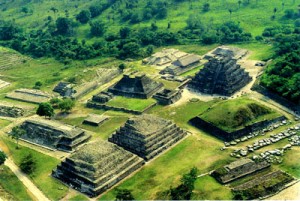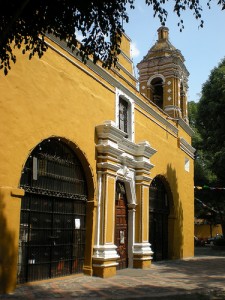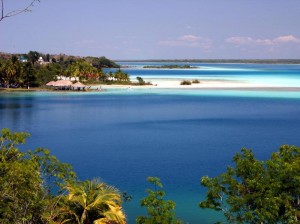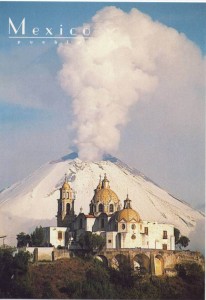 Located in the state of Veracruz, El Tajín is one of many important archaeological sites in Mexico. Most of this site is still unexcavated. The site is full of many fascinating and mysterious ruins. His boom was the beginning of the ninth century until the early thirteenth century; the cultural influence of Tajín went through the Gulf of Mexico and came to central Mexico. El Tajín has survived as an example of the greatness and importance of the pre-Hispanic cultures of Mexico more…
Located in the state of Veracruz, El Tajín is one of many important archaeological sites in Mexico. Most of this site is still unexcavated. The site is full of many fascinating and mysterious ruins. His boom was the beginning of the ninth century until the early thirteenth century; the cultural influence of Tajín went through the Gulf of Mexico and came to central Mexico. El Tajín has survived as an example of the greatness and importance of the pre-Hispanic cultures of Mexico more…
Archive for April, 2009
Puebla is a city and capital of Puebla state is also known as Puebla de los Angeles, is the fourth largest city in Mexico and is listed as a World Heritage Site by the UNESCO.
This city has many colonial buildings such as convents, parish churches or squares, the trend of mainly baroque and neoclassical XVI century, among them the cathedral, which is a building consisting of 14 chapels of various styles and protects many artistic works such as the dome and the main altar, decorated by painter Cristobal de Villalpando, besides the two organs donated by King Carlos V, this cathedral is the perfect example of the architectural beauty of the city.
The cultural wealth of this city is not only reflected in its architecture but also in its cuisine which is a mixture of pre-Hispanic heritage, Arabic, French and Spanish, which is reflected in his famous dishes such as “Chiles en Nogada” and “Mole Poblano”, which have gained worldwide fame. more…
 Coyoacán (means place of coyotes in Nahuatl) is a magical space, filled with history, legends and culture. Located in the south of Mexico City provides an enormous wealth to its visitors. It is one of the areas of the city where people can appreciate more the colonial legacy in the city, a few decades ago it was a town located outside the city and now is entirely within the same, but still retains its traditional Mexican character, which together with its beautiful squares, streets, mansions, gardens, churches, restaurants and museums, has attracted a large number of artists, which gave this area a pleasant intellectual atmosphere.
Coyoacán (means place of coyotes in Nahuatl) is a magical space, filled with history, legends and culture. Located in the south of Mexico City provides an enormous wealth to its visitors. It is one of the areas of the city where people can appreciate more the colonial legacy in the city, a few decades ago it was a town located outside the city and now is entirely within the same, but still retains its traditional Mexican character, which together with its beautiful squares, streets, mansions, gardens, churches, restaurants and museums, has attracted a large number of artists, which gave this area a pleasant intellectual atmosphere.
Coyoacán has its origins in pre-Hispanic times in which a population was located in the south on one of the lakes at that time covered most of the Valley of Mexico, but became more important after the fall of Tenochtitlan, and while this was rebuilt to form what is now the Historical Center, was established in Coyoacán the capital of New Spain. more…
 Bacalar is a town located 35 km from the city of Chetumal in the state of Quintana Roo and its name comes from the Mayan “bakhalal” which means place of reeds. This town is next to the famous Lagoon of Seven Colors, this town is a picturesque community for lovers of nature, adventure, history and cultural events, through which it acquired the level of Pueblo Mágico.
Bacalar is a town located 35 km from the city of Chetumal in the state of Quintana Roo and its name comes from the Mayan “bakhalal” which means place of reeds. This town is next to the famous Lagoon of Seven Colors, this town is a picturesque community for lovers of nature, adventure, history and cultural events, through which it acquired the level of Pueblo Mágico.
In pre-Hispanic times Bacalar was the most important town in Uaymil, one of the 16 provinces in which the Yucatan Peninsula was divided before the arrival of the Spanish conquerors. It was a prime commercial site as it was a transfer point for various goods brought from Central America, particularly from the region of Ulúa in Honduras. In 1531 were the first contacts with the Spanish conquerors in the area. more…

